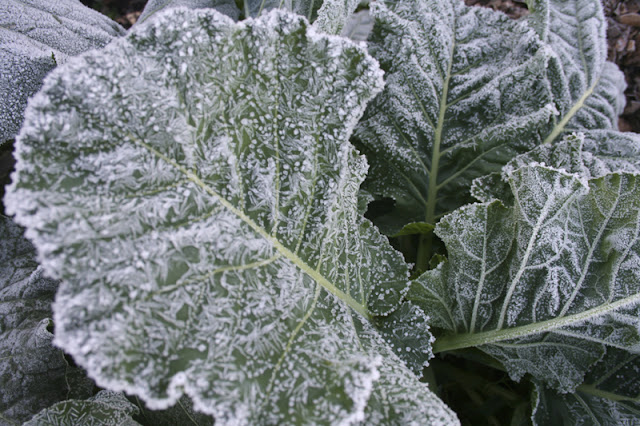Light Frost Versus a Hard Freeze
Knowing when to cover your garden plants in the fall to protect them from damaging frosty temperatures can be a little challenging. You have to consider which plants will tolerate the cold and which will not, how cold the temperatures will dip, and the duration of this cold spell. Also consider how early or late in the season your cold temps hit. For example, we experienced a dip this year during the first week in October with nightly lows hovering at 30 degrees. We were certainly past the date in which we could anticipate the possibility of frost, however, temperatures on the other side of the cold snap were predicted to be back in the 70s during the day and 40s-50s at night.
I chose to cover my tomato garden rather than pull off all of the tomatoes in hopes of giving them another couple of weeks in their home environment. Same plan for the basil, zucchini, yellow squash and pumpkin, which might not survive even a short exposure to 30 degrees. My herbs like cilantro, mint, thyme, oregano, and even the rosemary will be unfazed by these temperatures and will remain uncovered. Once the danger of frost has passed, uncover and store your tarps for another day. In time, you’ll develop a sense for when the time is right for you to either cover or tear down your garden. As a rule, anything close to 32 degrees is dangerous territory. My plants are tucked in a raised garden bed up against the garage so I might have a slight advantage in keeping them a few degrees warmer than if they were out at the far end of an open property. Covering plants to protect from a light frost can extend your growing season by a week to perhaps even an additional month! Eventually the hard freeze of winter will catch up to you. Regular nightly temperatures in the low 30s and below is not sustainable for most garden plants. This marks the end of the growing season and the garden will come to a close for the year. Until then, happy harvesting!


Comments
Post a Comment